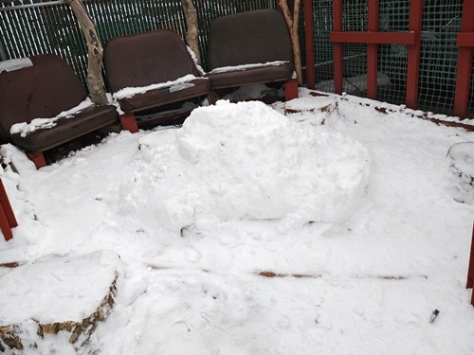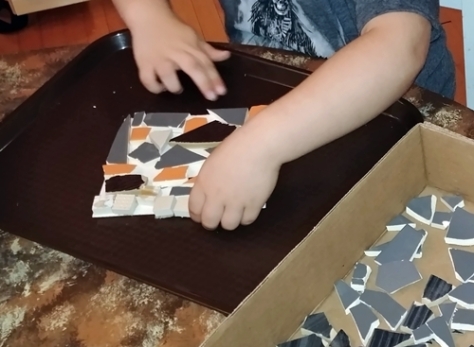Let me stray a little away from writing about children and childcare and tell a more personal story about safety and security vs risk, fear and anxiety.
Like every teen from my generation I got my beginners license when I was sixteen. Learning to drive was a rite of passage signifying a new freedom and responsibility. It was a responsibility that I took very seriously. I took the driver’s ed course THREE times – the first two times I refused to take the final driving exam. My instructor insisted that I was ready but I was not certain. Finally, just after my eighteenth birthday I decided that I was ready – took the driving exam and passed without issue.
For many years I drove regularly both in the city and on the highway but I was always a cautious driver. I have never turned on the radio while driving – passengers in my car were always allowed to play music if they wanted to turn it on but I would just block it out and focus solely on driving. If I needed to adjust the heat or other controls I would only do so while parked – once in motion the road and vehicles around me were my only concern. I strictly adhered to all road rules but was very aware that many other drivers did not.
I wouldn’t say I feared or even disliked driving – in fact, I found it quite relaxing in the right conditions. I always considered things like rain, darkness, heavy traffic and road construction to be a little stressful but they didn’t prevent me from driving. Surprisingly ice and snow never bothered me – maybe because I learned to drive in the winter. Still, driving was never on my list of my favourite things to do and if my destination was walk-able or had limited parking available then I would always choose to walk or take a bus.
I don’t know exactly when driving became something I dreaded – it was probably a gradual process – something I blame at least partly on news media for their coverage of horrific motor vehicle collisions. Maybe it was after many years of driving ‘beater’ cars – we often owned two or even three at a time, none costing more than a few hundred dollars – essentially ‘disposable’ if/when they broke down. I lost count of the number of times I was tasked with steering a car on the back end of a tow rope on the way to the wrecker.
Yet honestly, driving those beaters might have actually increased my driving confidence. One of my favourites had been our old Mercury Marquis station wagon – I could trust that old car to start and keep going in any weather on any road. The body however was not great – some parts were held together with duct tape. The tailgate latch was broken so we used a hasp and padlock to lock it. We usually simply rolled down the back window to load/unload stuff anyway because the tailgate hinges were unlikely to hold the weight of the opened door.
Probably the main reason I liked this car so much was because other drivers did not. If I wanted to change lanes I only had to put on my turn signal and all nearby vehicles slowed down & moved out my way – no one wanted to be too close to my monstrosity . Perfect – it made it possible for me to maintain my large personal bubble no matter how much traffic there was or how slowly I wanted to drive. Talk about owning the road!
When I opened my childcare home I felt a bunch of beater cars in various states of repair would not make a good impression so we cut down to just two fairly decent used vehicles. With me working from home we didn’t often need the second vehicle but it was nice to have for those times when our main vehicle broke down and my husband needed to get to work. My stay-at-home job was also probably a factor in making me dislike driving – the rare occasions when I needed to drive somewhere caused some anxiety about my lack of practice.
We also discovered that decent used vehicles still needed repairs and we no longer had the time nor space for DIY car repairs. The higher purchase prices meant we were more likely to repair these vehicles instead of replacing them and shop repairs were expensive. Even limiting repairs to only the bare minimum to keep the vehicle operational was taking a toll on our finances.
For many years, every repair required for our vehicles brought questions about the vehicle’s history. Had past owners neglected basic maintenance? Had the vehicle been involved in a collision? There was so much we didn’t know about our old vehicles and it affected our decisions. This uncertainty and all the ‘what if’ questions made me hesitant to drive – anxious – often without any identifiable reason.
Frustrated by used car breakdowns and expensive repairs we contemplated buying a new car. I did some calculations on the purchase price and repairs for our current used car over the three years we had owned it vs the payments for a new car over the same time period – new car payments would be less. So, in 2009 we decided to take the plunge an bought a brand new Mitsubishi Outlander.
I’ll admit, I did have a bit of a panic attack when I realized the total at the bottom of the invoice was more than our family’s gross income for a full year! Yet, for the first time I really enjoyed driving – the way the car smelled, the way it handled, the silence inside as I drove – so amazing. I often volunteered to drive for outings and I actually looked for excuses to take the car instead of walking or to make multiple trips instead of consolidating all my errands into one trip.
I also became more anxious – other drivers did not fear my new car and they came far closer to me than I was comfortable with. I sometimes held my breath for long periods of time while driving and occasionally needed to pull into a parking lot just so I could sit still and breath for a few minutes. I appreciated frequent red lights as they were opportunities to stop and breath without pulling off the road.
As much as I liked my new car it became much easier for me to just let others drive me everywhere I needed to go. This was especially if true if there was any type of time restraint. When I did drive I always gave myself twice as much time as required for ‘worst case scenario’ so I could be assured I would never have to rush and would have plenty of time for breathing breaks.
I had vowed to take the best possible care of my new car and scheduled every recommended service at the time indicated. I was quite surprised about how expensive all this vehicle maintenance cost. I was also disappointed by the number of repairs required. Yes, many of the repairs were covered under the new vehicle warranty – like having the transmission replaced after only 72,000 km. Still, others were blamed on bad roads because ‘reckless’ driving was definitely not a factor.
In the past year our not-so-new car has need some fairly major repairs that were not covered by any warranty. I first started this post last month when I was very, very angry. Angry that my car was in the dealer’s service centre for a whole week due to yet another costly repair. Angry that even all the expensive routine maintenance doesn’t ensure problems are caught early enough to prevent major issues – or maybe the service people noticed and didn’t care enough.
I was/am angry at everyone that made, sold or serviced my car. Angry that in the past year repairs on my ‘good’ vehicle have cost more than the purchase price of our ‘beater’ van – the one we use for any messy, heavy, or risky purpose so we don’t damage our ‘good’ vehicle. Our ‘beater’ van which has not had any type of service or repair in the seven years we’ve owned it.
Yet mostly I am angry that I am even more reluctant to drive now. I am unsure I can trust my car. I am concerned something else may break when I am driving. I’m annoyed that my ‘what if’ list is growing so much longer. I’m frustrated that my pre-driving planning for all the what-if’ has become so extensive that I could probably walk anywhere in the city in less time than it takes me to prepare, drive and recover.
So yes, I started this post in anger but over the month I’ve been writing it has kind of morphed into something else. It may actually be yet another example that efforts to increase safety and security may simply increase fear and anxiety – even for those of us who understand the importance of assessing and taking risks.






















